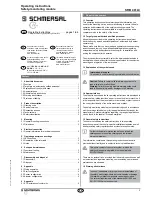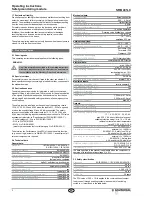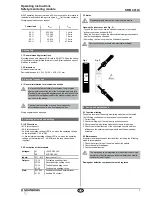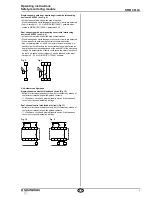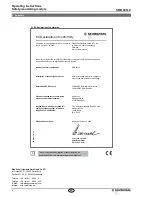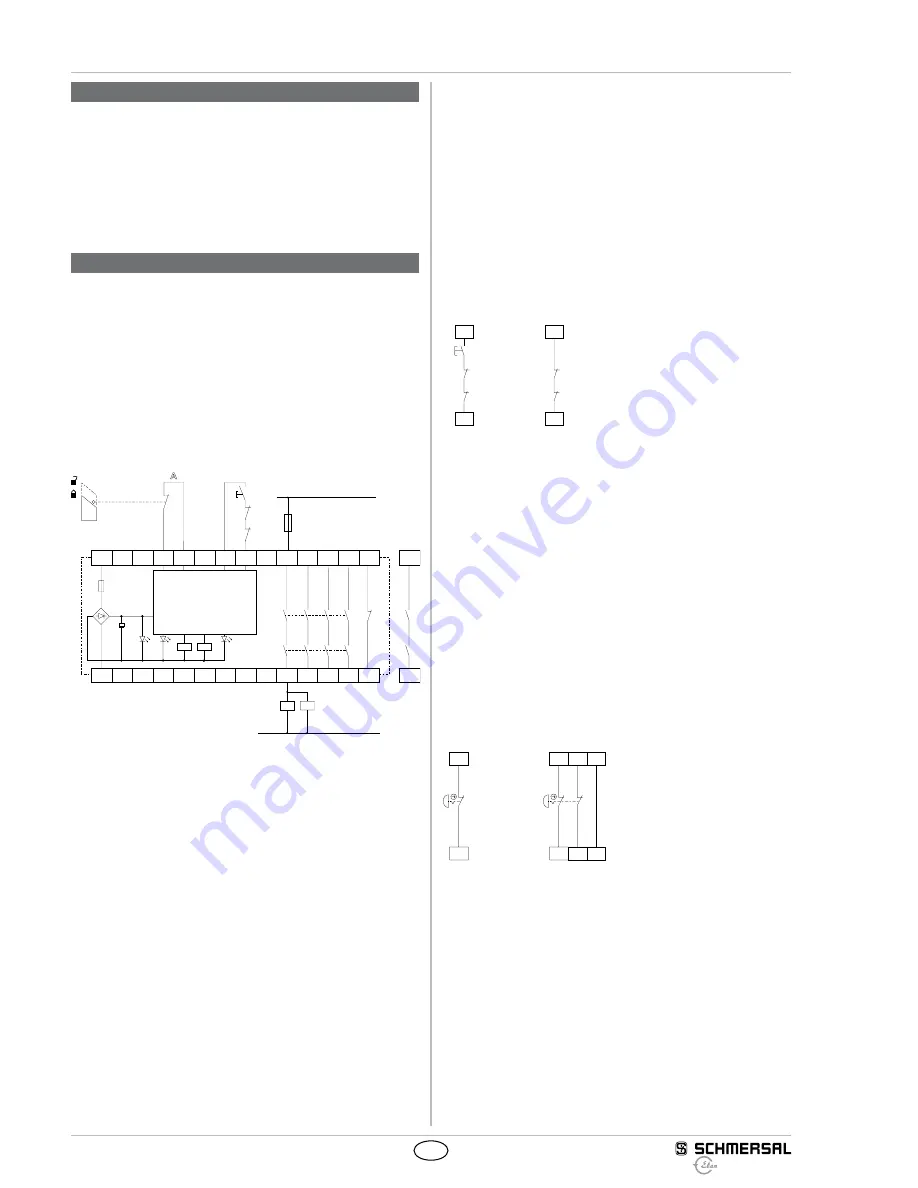
4
Operating instructions
Safety-monitoring module
SRB 401LC
EN
7. Disassembly and disposal
7.1 Disassembly
The safety-monitoring module must be disassembled in a de-energised
condition only
Push up the bottom of the enclosure and hang out slightly tilted forwards
7.2 Disposal
The safety-monitoring module must be disposed of in an appropriate
manner in accordance with the national prescriptions and legislations
8. Appendix
8.1 Wiring examples
One-channel control, shown for a guard door monitor with one
positive break contact and external reset button
J
(see Fig. 3)
• Relay outputs: Suitable for 2-channel control, for increase in capacity
or number of contacts by means of contactors or relays with positive-
guided contacts
• The control system recognises wire-breakage and earth faults in the
monitoring circuit
• F1 = Internal fuse
•
S
= Feedback circuit
Fig. 3
a) Logic
K2
K1
F1
A1
S11
S12
S33
L1
N
K
B
K
B
K
A
K
A
K
A
K
B
K1
K2
43
S34
A2
24
34
14
44
51
52
13
23
33
a)
J
S
Ui
8.2 Start configuration
External reset button (without edge detection) (see Fig. 4)
• The external reset button is integrated as shown
• The safety-monitoring module is activated upon actuation of the reset
button
Automatic start (see Fig. 5)
If the feedback circuit is not required, establish a bridge
•
CAUTION:
Not admitted without additional measure due to the risk of
gaining access by stepping behind!
• When the SRB 401LC safety-monitoring module is used with the
operating mode "Automatic start", an automatic restart after a
shutdown in case of emergency must be prevented by the upstream
control to EN 60204-1 paragraph 92542
Fig. 4
Fig. 5
K
A
J
S
K
B
S34
S33
K
A
S
K
B
S34
S33
8.3 Sensor configuration
Single-channel emergency stop circuit with command devices to
DIN EN ISO 13850 (EN 418) and EN 60947-5-5 (Fig. 6)
• The control system recognises wire-breakage and earth faults in the
control circuit
• Category 1 – PL c to DIN EN ISO 13849-1 possible
Dual-channel emergency stop circuit with command devices to
DIN EN ISO 13850 (EN 418) and EN 60947-5-5 (Fig. 7)
• The control system recognises wire-breakage and earth faults in the
control circuit
• Cross-wire shorts between the control circuits are detected
• Due to the integration of the NC contacts in the power supply, it is
possible that not all faults in the sensor technology are detected, as
some faults are not saved because of the switch-off of the operating
voltage An accumulation of faults could cause the safety function to
be lost As a result, control category 3 can be reached at the most
• Category 3 – PL d to DIN EN ISO 13849-1 possible
Fig. 6
Fig. 7
S12
S11
A1 A2
+UB –UB
S12
S11

